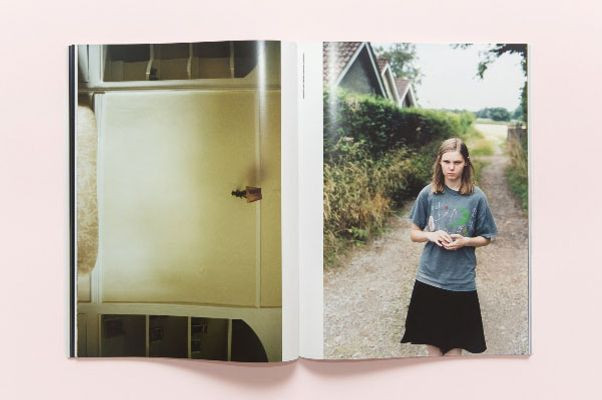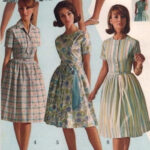Sometime last summer, it became increasingly difficult to distinguish between art students and middle-aged tourists in Soho. Both groups, sporting stonewash jeans, fleece jackets, and comfortable sneakers, appeared as if they had just arrived from Times Square via the subway. When I asked my friend Brad, an artist known for his uniform of Adidas trainers, mesh shorts, and plain cotton tees, about this new urban uniformity, his immediate response was: “lol normcore.”
Normcore. The term, while humorous, perfectly encapsulated the self-aware, stylized blandness that had become noticeable. Brad attributed the term to K-Hole, a trend forecasting collective and group of artists. K-Hole used “normcore” not to define a specific aesthetic, but rather a broader attitude: a deliberate embrace of sameness as a novel form of coolness, moving away from the constant pursuit of “difference” or “authenticity.” In fashion, however, this philosophy manifests in decidedly ordinary clothing. Think mall attire. Blank, unassuming clothes. The kind of non-style associated with figures like Jerry Seinfeld, now seen on a Cooper Union student wearing William Gibson-esque glasses.
Initially, normcore sightings were sporadic. A cool individual might wear a mock turtleneck with Tevas and a Patagonia windbreaker, or Uniqlo khakis paired with New Balance sneakers or Crocs and a souvenir baseball cap. This look also began to populate social media feeds, appearing on the Instagram and Tumblr accounts of internet “It” kids. Artist Jeanette Hayes, known for her collaborations with Proenza Schouler and Alexander Wang, was seen pairing white athletic socks with strappy stilettos and posing for selfies in a Yankees cap and junior’s denim. VFILES host Preston Chaunsumlit notably wore white nurse clogs for consecutive seasons. Devonté Hynes of Blood Orange built a collection of generic New York ball caps, which he often combined with turtlenecks, sweatpants, and boxy jeans. A reporter for Fader, describing Hynes’ appearance at an Empire State Building interview, noted he looked “like a tourist.”
By late 2013, it became commonplace to see downtown trendsetters, typically associated with brands like Acne and Isabel Marant, wearing nondescript half-zip pullovers and anonymous denim. Fashion magazines also began to acknowledge the trend. T magazine highlighted the “enduring appeal of the Patagonia fleece,” as seen on the runways of Patrik Ervell and Marc Jacobs. Vogue Paris featured Edie Campbell in Birkenstocks (or the Céline equivalent). Self Service showcased Adidas track pants layered under Louis Vuitton cashmere. Twin magazine juxtaposed a bucket hat and Nike slippers with Alexander McQueen coveralls. Smaller, emerging magazines like London’s Hot and Cool, New York’s Sex, and Garmento, showed an interest in even more genuinely average outfits, opting for the unadulterated normcore aesthetic over high-low fashion mixes.
Jeremy Lewis, founder and editor of Garmento, and a freelance stylist and fashion writer, describes normcore as “one facet of a growing anti-fashion sentiment.” Designer Andre Walker characterized Lewis’ personal style as “exhaustingly plain”—currently consisting of a North Face fleece, khakis, and New Balance sneakers. Lewis explains that his “look of nothing” is about distancing oneself from fashion, “lest it mark you as a mindless sheep.”
Lewis elaborates, “Fashion has become very overwhelming and popular. Right now, many people use fashion as a tool to buy rather than to discover their identity, ultimately feeling obscured and defeated. I draw inspiration from figures like Steve Jobs and Jerry Seinfeld. It’s a very understated look, conspicuously unpretentious, perhaps even charmingly awkward. It incorporates many cliché style taboos, but it’s not the irony that appeals to me; it’s the practicality and no-nonsense approach, which, to me, feels appealing right now. I appreciate the idea that one’s clothes don’t need to make a statement.”
One of the first stylists to embrace normcore aesthetics was London-based Alice Goddard. As early as 2011, she was curating this new mainstream minimalism in Hot and Cool, the magazine she co-founded. For Goddard, the allure of ordinary clothes was innovative: “Styling is about presenting different types of clothing in a fresh way,” she explains, “which often means taking something—an item, a character, or an idea—that I find somewhat ugly and unappealing, and transforming it into something desirable.”
Goddard’s initial fascination with normcore stemmed partly from a reaction against the prevailing fashion norms. A notable editorial in Hot and Cool no. 5 (Spring 2013) consisted entirely of screenshots from Google Maps Street View. Goddard was captivated by the plainly dressed individuals in “this tiny town in America” found on Google Maps, finding their style compelling. The editorial served as a parody of contemporary street style photography. She noted, “The key difference is that street style photographers typically capture people who have put considerable effort into their attire, often resulting in images that feel overly contrived and precious—the subject is acutely aware of being photographed. In contrast, the people we found on Google Maps were completely unaware of being photographed, yet their outfits, to me, were more intriguing.”
 Google Street View screenshots in Hot and Cool magazine, showcasing everyday people in normcore outfits, highlighting the trend's focus on ordinary, unpretentious style captured in candid, unposed settings.
Google Street View screenshots in Hot and Cool magazine, showcasing everyday people in normcore outfits, highlighting the trend's focus on ordinary, unpretentious style captured in candid, unposed settings.
The internet serves as a central hub for the normcore conversation. New media has reshaped our relationship with information, and consequently, with fashion. Reverse image searches and platforms like Polyvore make it effortless to identify the source of any garment. Online shopping, from eBay to The Outnet, makes each season’s collections available for resale almost immediately. Natasha Stagg, Online Editor of V Magazine and a regular contributor at DIS, where she penned a normcore-inspired essay on the queer appropriation of Abercrombie & Fitch, observes: “Everyone is now a researcher and a statistician, subconsciously aware of the popularity of every image they encounter, and what gains traction as a trend or meme.” Fashion cycles have accelerated and expanded so rapidly that staying current is impossible; in fact, a singular “current” fashion no longer exists.
Emily Segal of K-HOLE emphasizes that normcore transcends a specific aesthetic. “It’s not about simplifying or sacrificing individuality to become a bland, uniform mass,” she clarifies. Instead, it’s about embracing the possibility of being recognizable, of resembling others—and “viewing that as an opportunity for connection, rather than evidence of a dissolved identity.”
While K-HOLE defines normcore as a theory rather than a look, the contemporary normcore styles observed do have clear aesthetic roots in the nineties. Editorials in Hot and Cool bear resemblance to Corinne Day’s styling of a young Kate Moss in Birkenstocks in 1990, or Art Club 2000’s appropriation of madras from the Gap, reminiscent of grunge-lite and Calvin Klein minimalism. However, unlike the original iterations of these styles, which reflected anxieties about “selling out,” today’s normcore exhibits a more ambivalent stance towards market realities. Normcore is neither about rebelling against nor succumbing to the status quo; it’s about relinquishing the need for distinctiveness, making space for something new.
The demographic leading the normcore movement is predominantly Western Millennials and digital natives. Stylist-editors like Alice Goddard of Hot and Cool and Jeremy Lewis of Garmento are children of the nineties and teenagers of the 2000s. The aesthetic return to styles they would have worn in childhood feels like a reset—revisiting a time before adolescence, before the learned differentiation of identity through clothing. The internet and globalization have challenged the myth of individuality, while simultaneously making connection easier than ever. Normcore is a blank canvas and an open mind—a style designed to harmonize with others.
